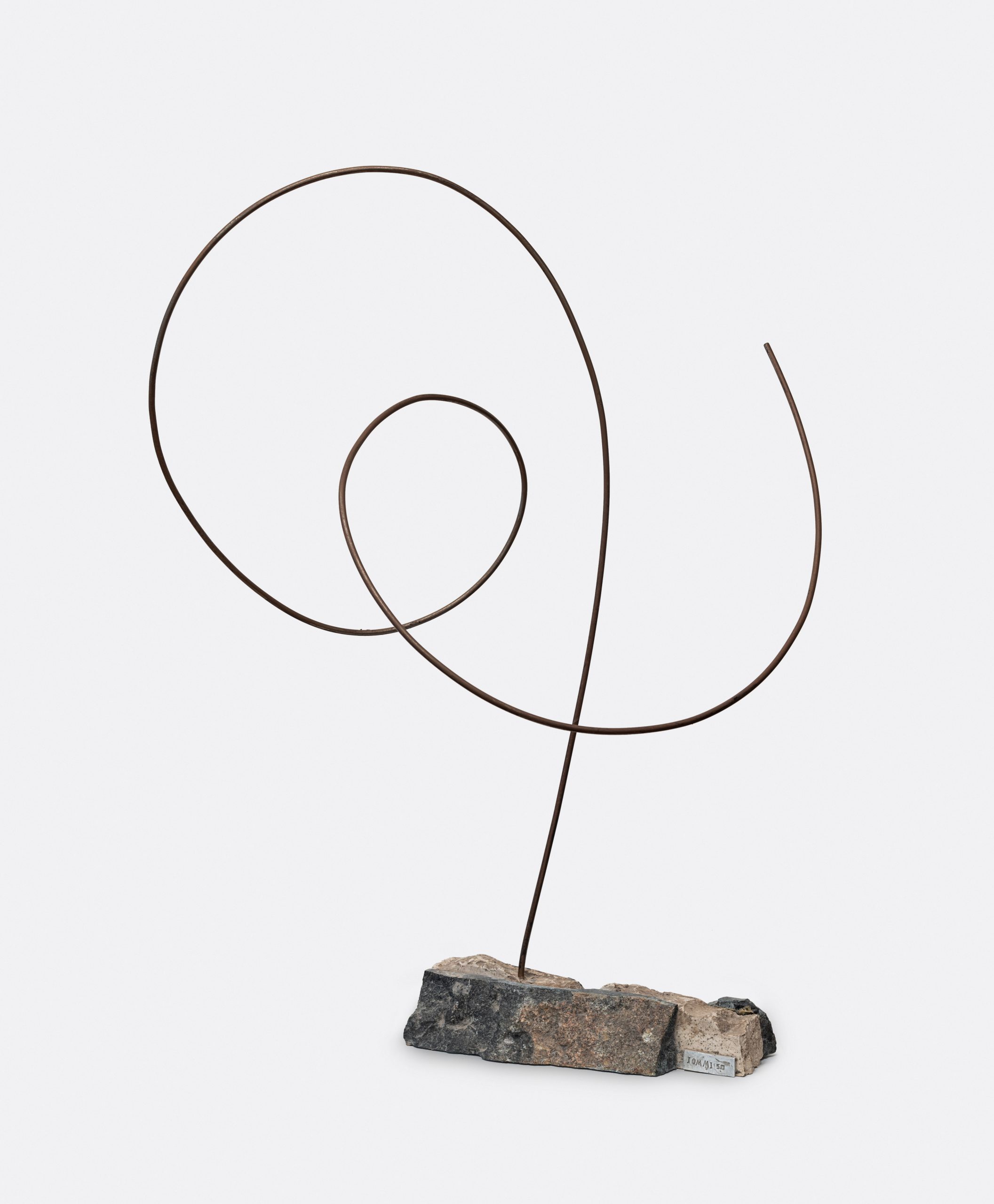Enio Iommi (1926-2013 – Argentina) is considered a paradigmatic figure of Argentina sculpture since its beginnings in the early ‘40s. Back then, he attended the workshop of La Boca by Claudio Girola, Alfredo Hlito and Esuardo Jonquiières. In 1946 he founded, together with other Argentine artists, the Concrete Art-Invention Association. The Inventionist Manifesto -that he signed together with Claudio Girola, Tomás Maldonado and Raúl Lozza, among others- generated a break with the academic canons that were being followed until then in Argentine art. Later, his career took other directions thus combining a defined and authentic artistic personality.
In the 1950s, he began to use diverse materials such as wire, aluminum, stainless steel, and bronze and created works such as his Directional Sculptures and the series of Linear Continuities. In 1952 he joined the Argentinian Modern Artists Group, with whom he exhibited at the Institute of Modern Art in Buenos Aires.
Between 1950 and 1976 Iommi moved on to a second stage characterized by concentric and continuous forms, as well as rectangular sculptures made of steel plates with flat surfaces, folded brass, copper and stainless steel. In 1960, he represented Argentina at the second Concrete Art exhibition in Zurich, Switzerland and in 1964 at the XXXII Biennial in Venice.
Due to his restless spirit, in the 70s he sought to expand the limits by moving from the concrete aesthetics and his work on the line, construction and space, to the realization of assembled objects. By 1975, he became a Member of the National Academy of Fine Arts Arts; membership which he renounced in 1999.
In the last decade of his productions, Enio Iommi focused on an ironic and severe criticism of the industrialization and consumption culture. So, despite working at the center of the art scene, his works ended up referring to the notions of art work and its intimate relationship with market.
Always rebellious, Enio Iommi responded throughout his career to the idea of a static art through dynamic productions that sought provocation and questioning. Iommi seeked to point out the existing depersonalization, the possibilities of technology and the limits of rationality.
Rather than a mere doing, his art aim to be an attempt of grasping the essence of reality. The election of the materials that were taken from the heart of the contemporary industrial civilization made the realization of his works an authentic expression of creative audacity and showed off his virtuosity for their use and handling.


 Enio Iommi
Enio Iommi